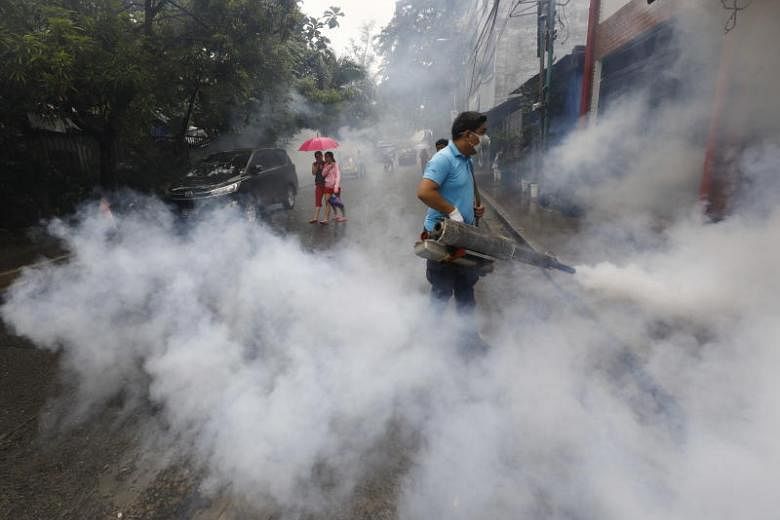MANILA (PHILIPPINE DAILY INQUIRER/ASIA NEWS NETWORK) -It is dengue season once again in the Philippines, and many are rightfully worried about a viral disease that can be both harrowing and life-threatening; one that has already claimed over 600 lives since the start of the year.
As a resident physician in San Pablo City, I used to accompany children with severe dengue on ambulances bound for Manila, and I have seen firsthand the anxiety over platelet counts, signs of bleeding, the search for blood donors and out-of-pocket expenditure.
As we try to make sense, however, of what the Department of Health (DOH) has just declared as a "national epidemic," I would like to underscore the role of human activity over long periods of time in creating environmental conditions conducive to the spread of the disease.
Central to this human-virus interaction is the disease vector: the Aedes aegypti mosquito.
Mosquitoes have played an enormous, if underappreciated, role in human history, leading the historian Timothy Winegard to call them "the ultimate agent of historical change."
In the recently released "The Mosquito: A Human History of Our Deadliest Predator," Winegard argues that mosquitoes had a decisive influence in the colonisation of the Americas (thanks to mosquito-borne diseases that decimated the local population).
Among mosquitoes, A. aegypti - also the vector for chikungunya, Zika and yellow fever - is particularly notorious.
While Anopheles, malaria's vector, should also be a contender, a Nature article (Powell 2016) calls A. aegypti "the most dangerous animal in the world."
Recent scholarship in population genetics (Powell et al. 2018) suggests that A. aegypti was introduced to the Americas from West Africa via the slave trade, and onward to the Asia-Pacific via trading ships like the Manila galleon.
In a compelling thesis about the role of colonialism in mosquito-borne diseases, Maria Pettis (2017) suggests that dengue itself may have arrived with the merchants and soldiers at the turn of the 20th century.
World War II may also have contributed to the further rise of the disease (Ooi and Gubler 2009); the first epidemic would be reported in Manila in 1954.
Mosquitoes thrive in shallow, stagnant pools of water. Because stagnancy usually results from human activity (e.g. the construction of canals and houses), the mosquitoes thrive in densely-populated human settlements.
This is where deforestation comes in: Both the sugar plantations and cities that fulfilled the above conditions required large-scale logging to clear the ground, and for timber to be consumed as fuel and construction material (Pettis 2018).
By altering the soil and water cycle, deforestation led to an increased need for irrigation, which in turn led to the proliferation of stagnant pools of water.
Moreover, increased temperatures due to reduced forest cover increased the bio-activity of mosquitoes and facilitated the breeding of larvae. Meanwhile, ecological changes brought about by forest loss could have reduced the number of the mosquitoes' natural predators, further contributing to their spread (Austin 2018).
Writ large, this ecological history - followed by urbanisation, the further degradation of our forests and climate change - continues to explain the tenacity of dengue in the country. It also explains why, by virtue of their living conditions, the urban and rural poor end up far more vulnerable to contracting the disease.
Recognising the link between deforestation and dengue - and more broadly, between environment and health - should make us consider pathogens beyond the microbial, or even the political.
Indeed, beyond today's fractious debates over vaccines and medical populists, and without diminishing the urgency of public health responses like an improved version of DOH's 4S strategy, we need to address the connections between access to flowing water and the proliferation of mosquitoes, land use and dengue prevalence, stagnant economies and access to health care.
Just as important, this insight should serve as yet another reason for forest conservation and reforestation.
Are we counting trees the way we count platelets - with a sense of urgency and grave concern? Perhaps if we recognise the importance of forests in our health, we would care more deeply about the health of our green regions.
The writer is columnist with the paper. The Philippine Daily Inquirer is a member of The Straits Times media partner Asia News Network, an alliance of 24 news media entities.

